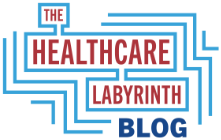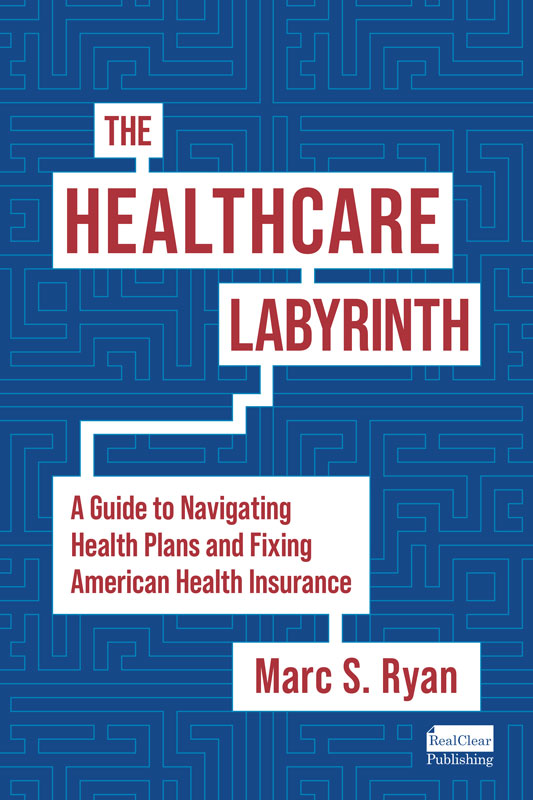Provider groups, anti-Medicare Advantage (MA) advocates and researchers, and even the congressional policy arm MedPAC are busy attacking MA for supposedly being over-reimbursed. Depending on the study you find, these folks will tell you that MA is over-reimbursed by as much as $88 billion annually. Of course, many of these calculations are speculative and throw in policy decisions by Congress to make Stars funding additive as well as to pay some areas of the country more than the fee-for-service (FFS) rate to promote more benefit choice in rural areas. They argue that risk adjustment coding is out of control and that MA has beneficial selection compared with the traditional program.
I have told you often in these pages that I come somewhere up the middle here. I discount the critics’ views and analyses. It is strange that critics’ overpayment estimates jumped from under $20 billion for so many years to $60 to $90 billion annually. To me that is evidence of manufacturing arguments.
But it is also true that MA plans may need to reform how they approach risk adjustment, which clearly would be the majority of any overpayment calculation (whatever the right figure truly is). The Centers for Medicare and Medicaid Services (CMS) recently adopted a new risk adjustment formula within rate-setting that will take about 7% of revenue out of rates between 2024 and 2026. This was a direct reaction to the overpayment concerns. In addition, the new risk adjustment data validation (RADV) rule is meant to globally reduce such overpayments over time. And we can expect far more of this, including perhaps an interim step of CMS moving the negative coding intensity factor in rate-setting.
The HRA game
A new study finds that MA plans that conduct in-home and other Health Risk Assessments (HRAs, but not necessarily the ones for the Special Needs Plans) are adding considerably to revenue through coding diagnoses from these encounters. Published in the respected journal Health Affairs based on 2019 data, the study finds that when such an HRA is present, risk scores increase by about 12.8 percent on average. Restricting their use for such purposes could save between $4.5 billion to $12.3 billion.
The researchers found that “… artificially exaggerated coding intensity, where plans seek to enhance measured health risk through the addition or inflation of diagnoses, may threaten payment rate integrity. One factor that may play a role in escalating coding intensity is health risk assessments (HRAs)—typically in-home reviews of enrollees’ health status—that enable plans to capture information about their enrollees.”
This is consistent with earlier findings of the Department of Health and Human Services Office of Inspector General (HHS OIG), which studied HRAs for the 2017 calendar year. At the time, HHS OIG found that diagnoses reported only on HRAs-and on no other service records that year led to an estimated $2.6 billion in additional risk-adjusted payments. At the time the HHS OIG said the results “raised concerns about the quality and coordination of care for enrollees, the validity of diagnoses reported on HRAs, and the appropriateness of payments generated by HRAs for 2017.”
Note the HHS OIG looked at 2017 data, while the Health Affairs published one using more current 2019 data. So the trend is increasing dramatically. Indeed, the Health Affairs researchers found that 44.4 percent of MA beneficiaries had at least one HRA. Thus, the HRA is prolific and ties more to risk adjustment revenue than pure quality achievement.
The manual chart review game
More broadly, a whole cottage industry has grown in MA related to manual chart review and supplemental submission for risk adjustment purposes. Submissions are not always linked to an actual physician encounter with a patient. In other cases, the tie is tangential at best. The HHS OIG conducted a separate study of 2016 risk adjustment chart reviews and encounter data published in late 2019 and estimated that $6.7 billion in payments were tied to diagnoses that were only from chart reviews and not tied to any other service event.
HHS OIG puts it all together
The HHS OIG came back in late 2021 with an additional study using the same data from 2016 and combining the HRA issue and manual chart reviews. It found that 20 of the 162 MA plans it had data on drove a disproportionate share of payments related to diagnoses that were reported only on chart reviews and HRAs and no other service events. HHS OIG pegged the overall universe of potential overpayments across all the plans at $9.2 billion. HHS OIG said that the higher share of payments to the 20 plans could not be explained by their enrollment size. The companies generated payments that were more than 25 percent higher than their share of enrolled MA beneficiaries. The 20 companies drove 54% of the $9.2 billion. One company drove 40% of the total amount.
Manual chart reviews for quality performance going away
In a separate initiative, I would note that CMS and the National Committee for Quality Assurance (NCQA) are currently in the process of phasing out manual chart reviews in the annual HEDIS measure quality submission process. The manual process is being replaced by electronic measure standards. In time, NCQA will adopt an entire digital strategy. The over-arching rationale, too, is the move to interoperability. So, the process here seems like a bad omen for the manual processes still used in risk adjustment.
Expect reforms from CMS
I expect CMS to build a policy case over time that both HRA submissions and manual chart review submissions should go away. CMS will argue that if a plan cannot submit a diagnosis based on a clinical encounter with a provider, it should not be eligible for consideration in risk adjustment. And while I am a friend of MA, it is hard to argue the point. While I disagree with the huge overpayment estimates, reforms are needed. Diagnoses for risk adjustment that are tied exclusively to HRAs and chart reviews seem questionable. And the data would show that there are clearly some bad actors out there. The magnitude of their behavior tends to skew data and cast all MA plans in a bad light.
CMS likely will bar or at least significantly restrict the ability to add diagnoses to risk adjustment based only on HRAs. Indeed, the HHS OIG says it will issue new findings on the topic sometime in 2024 based on 2023 data. And MedPAC has recommended excluding diagnoses tied only to HRAs from risk adjustment.
On the manual chart front, CMS likely will create an agenda to restrict manual chart submissions and ultimately bar them.
Possible timeline
How might this roll out? Of course, this is just speculation, but consider the following possible timeline.
HRAs:
The HHS OIG issues its report in 2024. If this occurs early in 2024, this could give CMS enough time to consider major restrictions or a bar to HRAs in risk adjustment for the 2026 rule. That rule will have to be issued in interim form by late 2024. Or the restrictions could occur with the 2027 rule, which would be issued in interim form by late 2025.
Due to the big lead time of bid and rate submissions each year and the fact that a rule would not be finalized until plans are well into those processes for the next calendar year, the effective date of any changes would need to lag the effective date of any rule. That means any HRA change might be effective in 2027 if it is in the 2026 rule or in 2028 if it is in the 2027 rule.
Manual chart reviews:
CMS would also need to do this by rule. It could theoretically do this in the 2026 rule. But more likely this would take more time and perhaps move to the 2027 rule, issued in interim form in late 2025. Whatever the actual year, I would bet that CMS would structure the move away from manual chart review in a phased way, much as they approached the phaseout of the old-line Risk Adjustment Payment system (RAPS) process in favor of encounter data submission only (EDPS). At the time, CMS was sensitive to the revenue impacts on plans that were not ready for the more complex encounter submission process. CMS likely would have those same sympathies here as well.
Thus, the manual chart review phaseout could be phased in over a three-year period as one example. The possible scenarios include the following based on the big lead time of bid submissions each year:
- 2026 rule implementation
- One-third weight phaseout of manual chart reviews in CY 2027
- Two-thirds phaseout of manual chart reviews in CY 2028
- Chart review is gone in CY 2029
- 2027 rule implementation
- One-third weight phaseout of manual chart reviews in CY 2028
- Two-thirds phaseout of manual chart reviews in CY 2029
- Chart review is gone in CY 2030
What would plans need to do?
While the horizon for changes for each looks long, it really is not. Plans would face major reductions in overall revenue if both the HRA and manual chart chase processes went away for risk adjustment. Plans complained about the impact of the new risk model phased in from 2024 to 2026. We know benefits will realign because of the financial problems in MA right now. The impact would be far greater for one or more of these other changes.
Plans would need to totally rethink how they capture diagnoses for risk adjustment in many ways. Here are a few thoughts.
- Many plans continue to have poor end-to-end encounter submission processes. Indeed, it is easier to paper over these and default to a manual chart process. Plans would need to reinvest in encounter excellence, from upfront provider relations and education, to encounter assessment, to submission and remediation.
- As is done to some degree today, plans could analyze claims and other data to notify physicians of potential missing diagnoses and risks. This would be a reasonable substitute for even more retroactive manual chart activities.
- Plans would also need to work with CMS to define how the world of interoperability will impact risk adjustment moving forward. It offers the hope of finding diagnoses directly tied to physician encounters hidden in the electronic medical record (EMR) systems that never make it to an encounter. Indeed, the basis for manual chart reviews was because providers do not document every health risk in encounters. The problem is plans may have taken this way too far.
Additional reading and sources:
https://www.healthcaredive.com/news/medicare-advantage-overpayments-medpac-2024/704579
https://www.healthaffairs.org/doi/full/10.1377/hlthaff.2023.00787
https://digirepo.nlm.nih.gov/master/borndig/9918266195006676/9918266195006676.pdf
https://oig.hhs.gov/oei/reports/OEI-03-17-00474.pdf
https://oig.hhs.gov/reports-and-publications/workplan/summary/wp-summary-0000789.asp
#medicareadvantage #medicare #hras #overpayments #riskadjustment #radv #rates
— Marc S. Ryan





